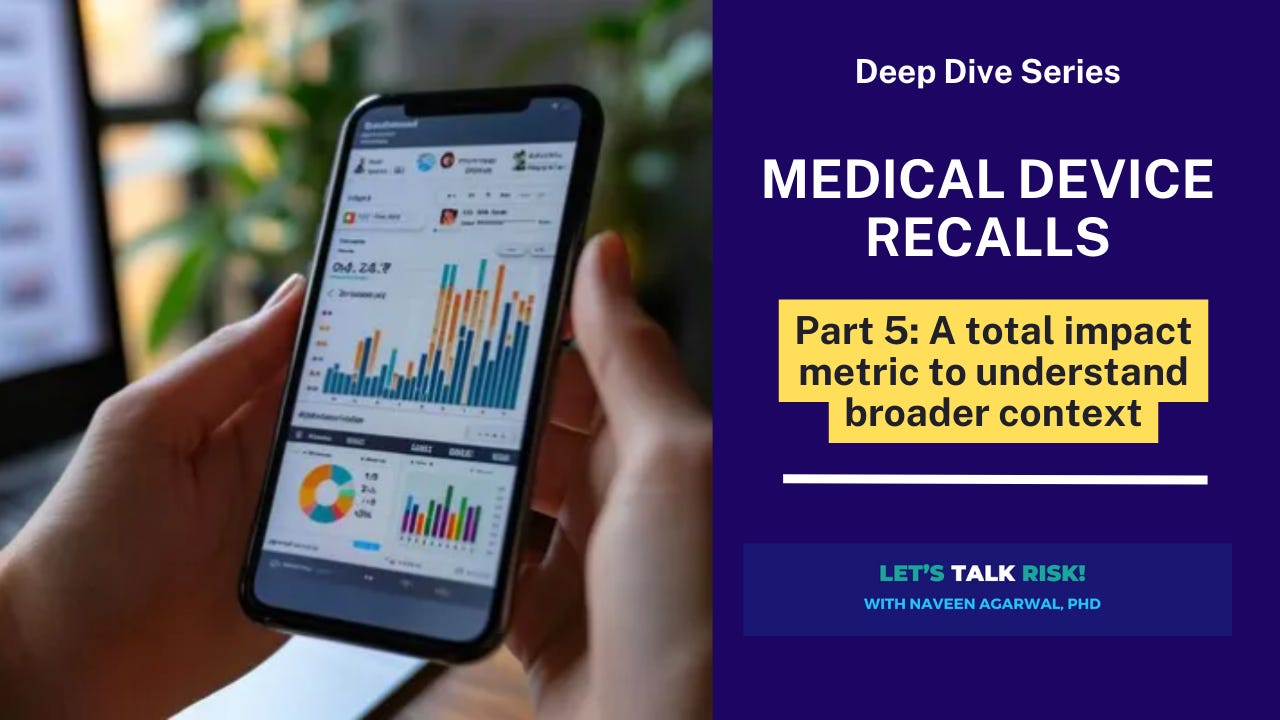Medical Device Recalls Part 5: Understanding Broader Context
One recall can change the entire perception of safety. Part 5 of our deep dive series looks beyond raw counts to show how impact-based metrics uncover the patterns that really matter.
Note: this article is part of our deep dive series about medical device recalls. Find the previous articles here: Part 1, Part 2, Part 3, Part 4.
In May 2023, Medtronic initiated a voluntary recall of implantable cardioverter defibrillators (ICD) that affected over 800,000 units worldwide. FDA classified it as a Class I recall1, the most serious type of recall, where continued use of these devices could cause serious injuries or death. The issue was related to certain ICDs and CRT-Ds, with a glassed feedthrough that could trigger inappropriate activation of the Short Circuit Protection (SCP) feature, leading to no or low energy delivery.
At first glance, this Class I recall appears to be a major safety issue. A single recall event2 in this case, translated into 120 individual recalls across device types and models, collectively affecting over 800,000 units shipped since 2017. While only a small number of injuries and deaths were reported, the sheer scale of the recall can easily skew perceptions of the overall safety and effectiveness of these devices.
It is not our intent to diminish the significance of this recall for patients and clinicians. The concern is real, especially because it appears tied to the malfunction of a safety feature (the SCP). We will explore this specific issue in greater detail in a future article.
In this article, however, our focus is broader. Rather than isolating one recall, we step back to examine recall data at the industry level. Using ChatGPT, we analyzed nearly 100 recall events since 2004 and developed a total impact metric to help visualize large-scale patterns. The resulting heat map highlights trends that might otherwise remain hidden in raw FDA recall records.
Here’s the surprising part - counting recall events only tells part of the story. A simple tally suggests who recalls the most, but not which recalls matter most. By applying a metric that accounts for severity, frequency, and units affected, a very different picture emerges that helps understand the big picture over a longer timeframe.
🔒 Ready to go deeper? Subscribe now to access the full breakdown:
Why simple recall counts can mislead, and how the total impact metric reveals a very different picture of risk.
Case studies from Medtronic and Boston Scientific showing how recall size and true impact don’t always align.
The real challenge - and opportunity - for QA/RA leaders is to move beyond recall counts and start interpreting impact. That shift changes how we prioritize risks, allocate resources, and ultimately protect patients.
Note: Recalls data was extracted from Orca1.ai, a comprehensive analytics platform for life sciences.
Keep reading with a 7-day free trial
Subscribe to Let's Talk Risk! to keep reading this post and get 7 days of free access to the full post archives.





